This post is part of a series that covers our experiences in Buying Our First Property In Costa Rica:
- Why We Chose Not To Buy In The Philippines
- Why We Chose The Gold Coast Over the Southern Zone
- Why We Passed On This $400,000 Vacation Rental (current post)
- Why We Chose The Convenient Center Over The Quiet Hills
- How We Financed Our First Costa Rica Property
On our first trip to Costa Rica, while driving around the different beaches in the Guanacaste area, we stumbled on an Open House sign for a development near Playa Flamingo. We saw multiple lots, where we could develop a property, and we also saw an already built spec home we could have immediately.
It was 1,950 square feet, with 3 bedrooms and 2 baths. It had a garage and infinity pool, with a view of the ocean in the distance. It was listed at $399,000.
We ended up passing on the home, and here’s what factored into that decision:
Using a rough estimate, the numbers already didn’t work
Costs for a short-term vacation rental are high. Let’s say this unit generated $40,000 per year in rental income. That $40,000, which looks like a healthy 10% return on the $400,000 sales price, gets whittled down pretty quick:
- On $40,000 rents, you pay 20% to the property manager, so we are down to $32,000 after management fees.
- You also pay at least 3% service fees marketing sites, such as AirBNB, VRBO, and Homeaway. Subtracting another $1,200 leaves us with $30,800. (see AirBNB service fee pricing)
- Electric costs are high in Costa Rica, and a vacation rental at the high end needs to offer air conditioning, so expect to pay $250/month. After spending $3000 on electric, we are left with $27,800.
- Internet would also be expected and would run another $100-150/ month. After that $1,800 deduction, we are at $26,000.
- There will be many miscellaneous fees, including insurance, taxes, HOA dues (this complex was unusually low at ~$100/month for this unit), LLC fees (because we would own the unit through a business), ongoing maintenance (for the pool, grounds, housecleaning), and long-term maintenance. These costs easily would take off another $5,000, so we are now left with $21,000.
On a $400,000 investment, $21,000 is barely 5%, and that assumes no other major costs. $400,000 is a lot of cash to fork over for just a 5% return.
There is also little room for financing the unit. Conventional financing is hard to get in Costa Rica, and if you could find a hard money lender to give you the money, you’d still need to put down at least 35%, the interest payments will add up (additional expense), and the monthly loan payment will likely be more than the cash flow.
We weren’t sure about the numbers to begin with
The numbers already look bad starting with 10% in revenues. But could we even hit that revenue? Getting $40,000 per year implies 100% occupancy at over $100/night. 100% occupancy for a new vacation rental is unrealistic. 50% occupancy might even be too aggressive for year one. But if we take 50%, we would need to rent the unit for over $200/night. Can we get $200?
One property manager estimated the unit could get $250/night on average, but another property manager felt that a $250 rate would be realistic for peak rental months only (Christmas, Easter, summer, or 3-5 months out of the year).
Another bigger, more well-appointed house in the area was already listed at $250, so clearly our number would be less than that. It was hard to find reliable data on rates and occupancy, but what little we found made the $40,000 hypothetical revenue number already a stretch. Going back to point 1, we needed more than $40,000 in rental income to safely cover costs.
The house didn’t match our parameters
Cash flow: Other investors might be okay with a single-digit return, or even break-even or negative, hoping for appreciation. There is supposed to be more development near Playa Flamingo, and that could push prices higher. However, our investment philosophy is to buy for cash flow, not appreciation. Given that this would be our first vacation rental (all of our other rentals are long-term), it would be even riskier to veer from our conservative investment philosophy now.
Location: We really wanted to be in Tamarindo, not Flamingo, because Tamarindo is walkable to the restaurants, shops and night life. Other investors might be okay going further out to get more space, but we prioritize location over size.
Percentage of portfolio: Finally, the $400,000 price point, with little room on the cash flow to cover financing, meant that we’d need to put a considerable portion of our cash earmarked for real estate into this one deal. Ideally, we put less than 10% of our investable cash in each deal, and this deal required a larger percentage.
The seller wouldn’t lower the price
All of the above could be negotiated away if we could get the house at a lower price, below our investable cash maximum. A lower price would mean we could potentially get a satisfactory return with a lower revenue. At a low-enough price, we might even be able to generate enough revenue to market the home as a long-term rental – that would dramatically lower the costs, as property management fees drop to 10%, utility costs are borne by the tenants, and extra marketing site fees disappear.
There were several advantages to this house that made us do all this due diligence, even when the price was high:
- It was fully built out, which meant we could start earning day one, rather than waiting 1-2 years to build.
- It had much lower association fees than comparable properties.
- The amenities (pool, tennis court, hiking trails) would make this an attractive vacation rental.
- The proximity to a top school made this a versatile property also suited for long-term rental, if we opted to go that route.
- The furnishings were included, reducing some of the typical hassle with acquiring vacation property, as well as the time required to make it rent-ready
- The lot – with a view of the ocean – pushed our emotional buttons.
We were not ready to move forward at asking price, so we pitched a price that would fit our parameters. The seller wouldn’t budge, so we walked away.
======
Check out our full series on Buying Our First Property In Costa Rica:
- Why We Chose Not To Buy In The Philippines
- Why We Chose The Gold Coast Over the Southern Zone
- Why We Passed On This $400,000 Vacation Rental (current post)
- Why We Chose The Convenient Center Over The Quiet Hills
- How We Financed Our First Costa Rica Property


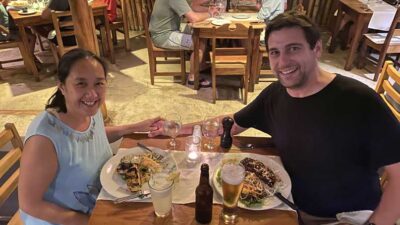 We are Scott and Caroline, 50-somethings who spent the first 20+ years of our adult lives in New York City, working traditional careers and raising 2 kids. We left full-time work in our mid-40’s for location-independent, part-time consulting projects and real estate investing, in order to create a more flexible and travel-centric lifestyle.
We are Scott and Caroline, 50-somethings who spent the first 20+ years of our adult lives in New York City, working traditional careers and raising 2 kids. We left full-time work in our mid-40’s for location-independent, part-time consulting projects and real estate investing, in order to create a more flexible and travel-centric lifestyle. 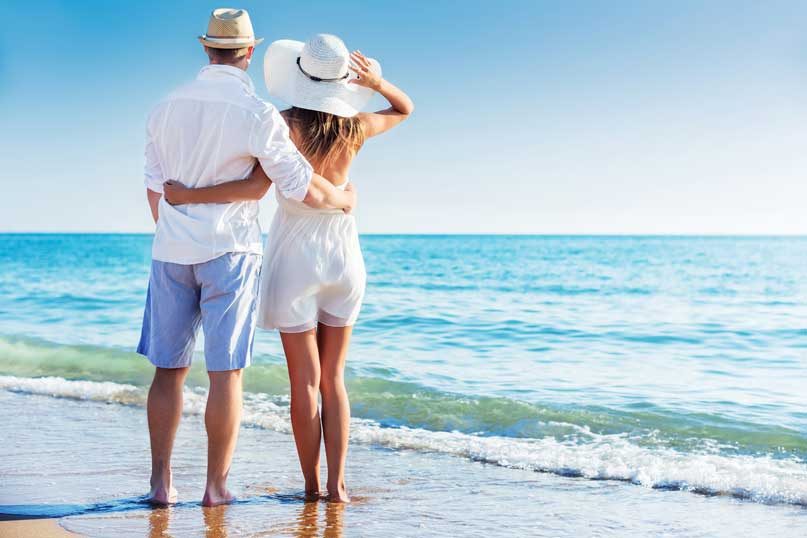 Financial independence and early retirement is not something we originally focused on, but over time realized it was possible. Our free report,
Financial independence and early retirement is not something we originally focused on, but over time realized it was possible. Our free report, 

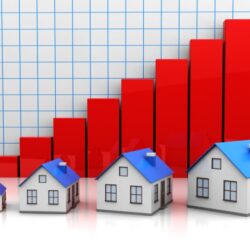

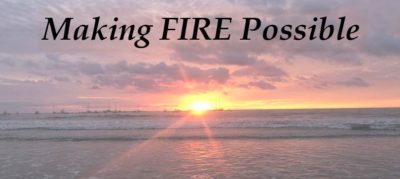
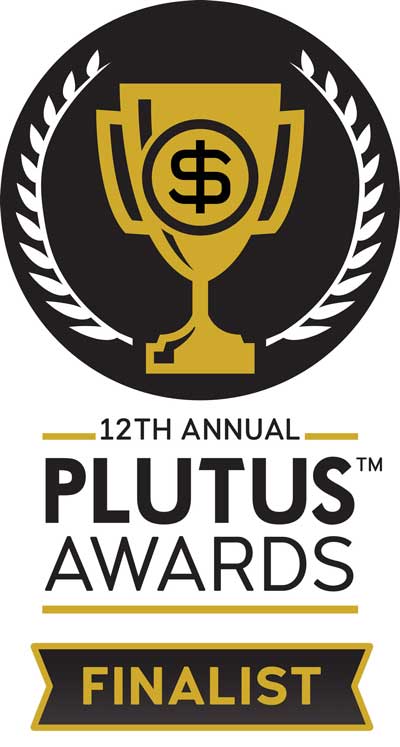

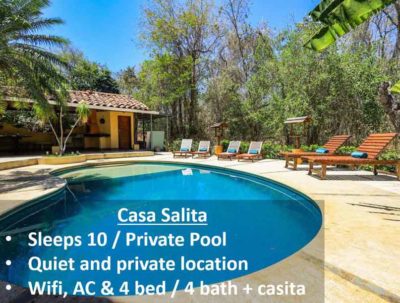
Very smart decision. It pays to do a little homework before spending that kind of money. We live in Costa Rica and manage several properties that are very successful rentals on Airbnb and they barely break even.
Yes, we were concerned about the upkeep on a high-end rental. Ultimately we did end up spending even more down the road, but it was for something we felt could cash flow sufficiently.
Curious to know about why you think the busy rentals you manage barely break even — are the costs just so high? Is competition driving down rates? Where are the properties located? What type of properties?
Hi Caroline,
Just a quick note to see if you received any response from Bruno as to why the successful rental properties he is managing in Costa Rica are barely breaking even? My wife and I are currently looking at purchasing a rental property there.
Hi Dana, I didn’t hear back from Bruno!
Excellent! Another fantastic post. I really enjoy reading this and the other content on here.
Hi Matt, glad the post resonated. This post was actually inspired by reader questions — we get a lot of questions on how we pick what to invest in. Any questions you’d like to see covered — whether real estate, FIRE or something else?
Nice to see some real numbers even though they are estimates. Thanks for the post. I’ve often thought about retiring in Costa Rica and purchasing some vacation rentals. I find the properties to my liking and the Wild life and tropical setting perfect.
We obviously agree given that we have 3 vacation rentals to date! We have many posts on how we picked our properties, our experiences in Costa Rica, etc. Thanks for reading!
I would never recommend a person to buy a property for income generation in Costa Rica. To live here, yes. I stayed in Tamarindo but bought in Ojochal. Tamarindo reminds me of gringo California. For me personally, the less gringo’s the more freedom and authentic Tico life. Pura Vida
Thanks for sharing your experience. We opted for Tamarindo over Ojochal b/c we wanted more accessibility to shops, restaurants, etc by walking around since I don’t drive. But I agree that you have to keep your specific wish list in mind since the areas can be quite different. And agree that you have to carefully run the numbers if you’re looking for income and not just enjoyment — vacation rentals have high maintenance costs, and it can take a while to get your rental noticed.
I’ve lived in Tamarindo 7.5 years and have 2 rental properties and another we live in. I would not recommend investing in rental property here if you expect to clear more than about 3 percent. You may do better, but probably not. Another big mistake is that people move here thinking they can make a living and it’s cheap to live here. Life is much simpler in CR and I really like it, but it is not cheap. Unless you can work remotely, the odds of making a decent living are very slim.
Thanks for sharing your candid feedback! Agree that Tamarindo is not cheap — prices reflect the touristy nature of the town. That said, since we were coming from NYC, it was relatively cheap. Agree too that work would be hard to come by except for tourism-dependent or remote work. I do think that rental income could support a basic lifestyle. We currently rent all three of our properties but we bought three with the idea that we could live in one and live off the other two, and based on our limited data (since 2017) and based on pre-pandemic numbers, we could do that. It’s too early to tell what the post-pandemic normal will be, but already we’re seeing more demand.
3% is a pretty low return and much different than the numbers I realize in Costa Rica.
Why did you ever buy the second rental property if the numbers were so dismal on the first? You can double your return on a passive utility stock.
I can’t speak for Traveler, but they may have different return expectations and other goals for their investments. I know some real estate investors who are fine with a single digit return each year b/c they intend to pass the property onto family, or use it themselves eventually, or see it as an inflation hedge, or just enjoy real estate as an investment/ business. I know I have enjoyed the real estate journey from an activity standpoint and not just the financial return.